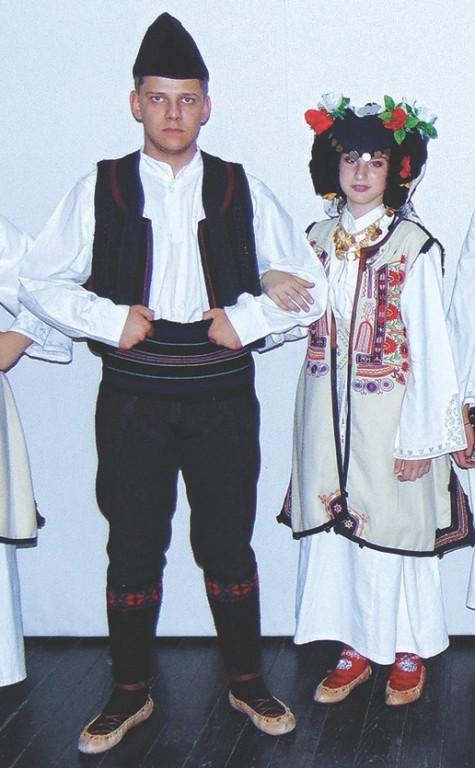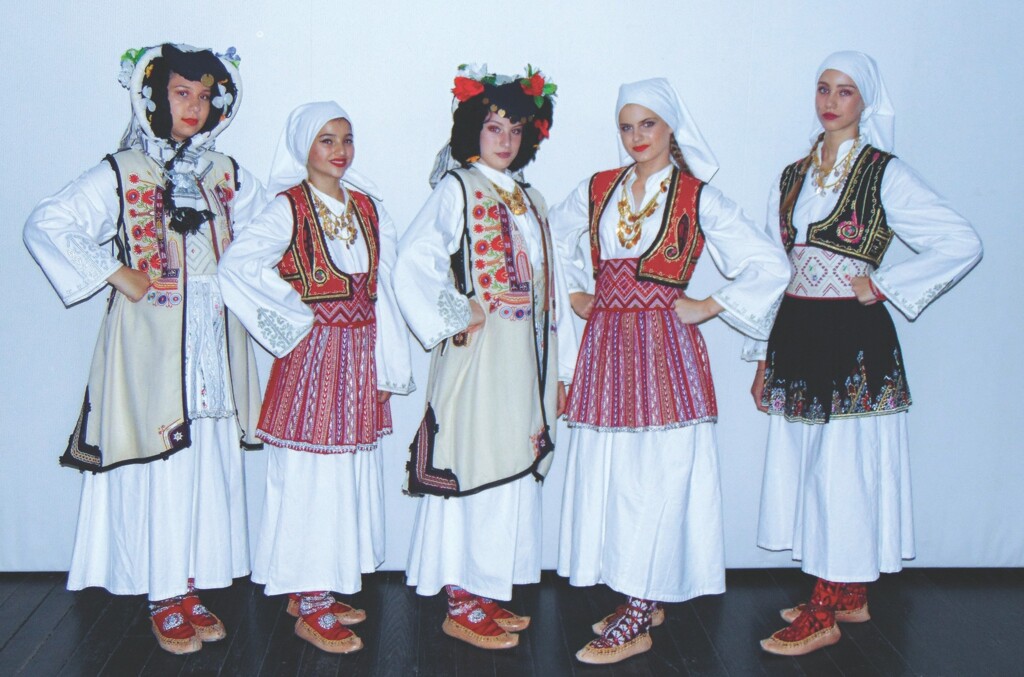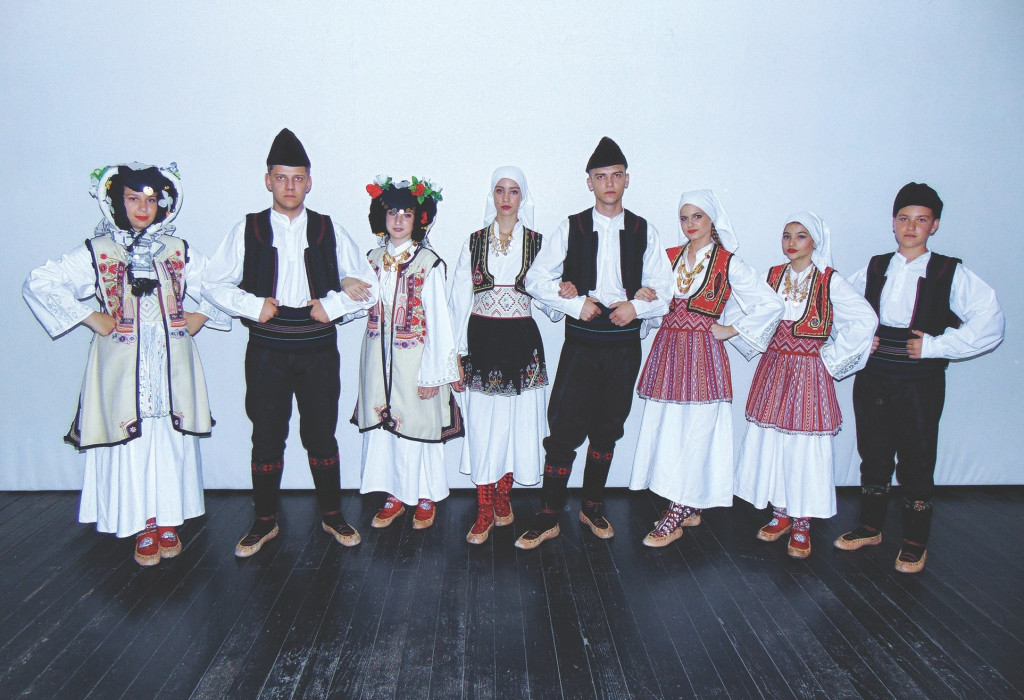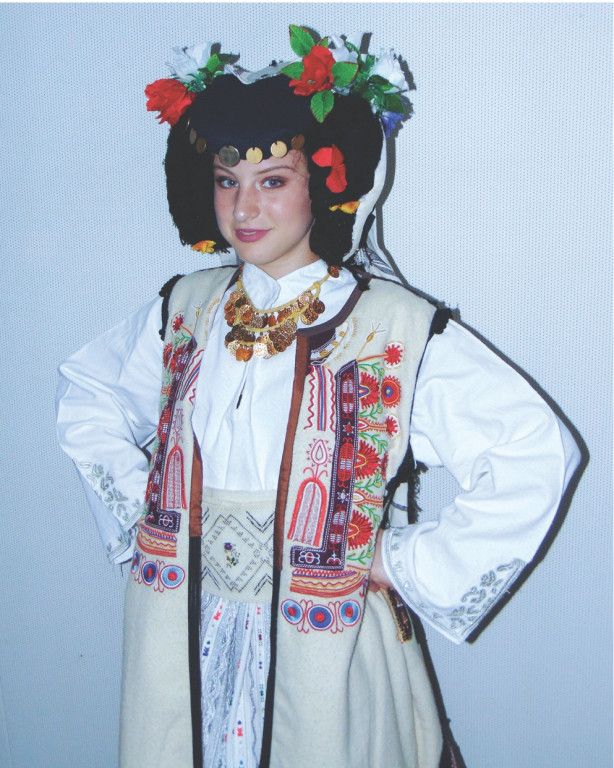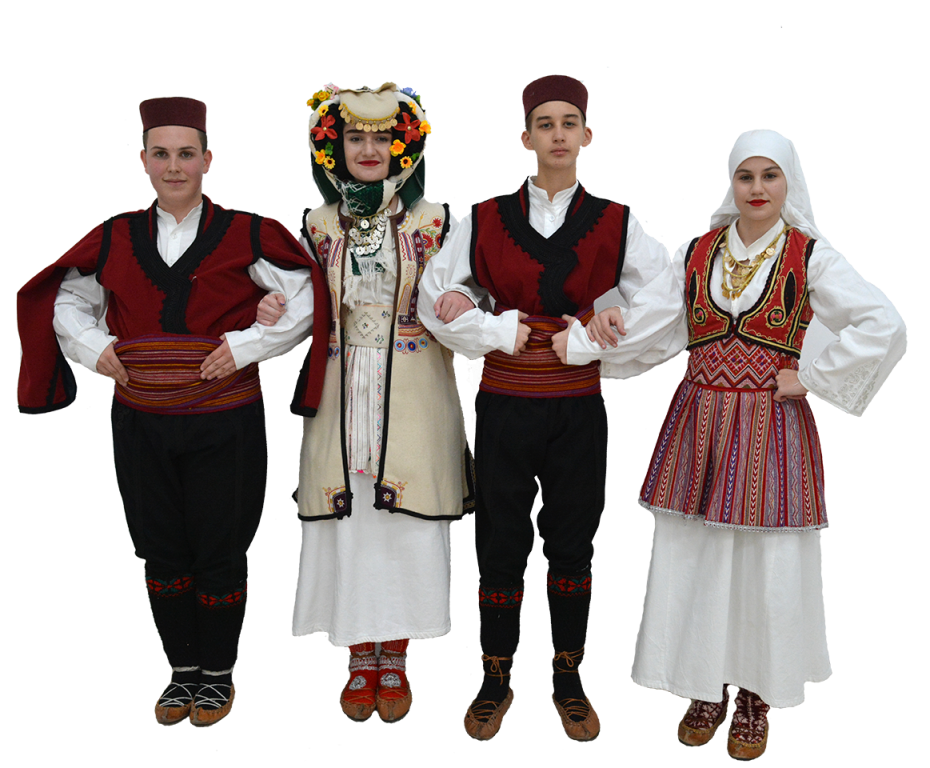The clothing patterns of Serbs in Kosovo Polje,
Late 19th, First Half of 20th Century
For the beauty and harmony of its clothing forms and decorations, the Kosovo-Metohija region stands out for its Kosovo folk attire. In the area from Kosovska Mitrovica to near Kriva Reka, up to the beginning of the 20th century, there was a characteristic, stylistically unique rural dress, with some variant differences. These differences were manifested in ornamental compositions, different lengths of aprons, as well as headwear. Jovan Cvijić highlighted that 'in terms of richness and beauty, there is no equal to the Kosovo peasant Serbian dress. It reminds one of the attire of 'vladika', Serbian noblewomen. Branislav Nušić wrote that Kosovo female attire is distinguished by beautiful embroidery, colors, and tasteful cut, and 'in terms of richness, it will hardly be surpassed by the attire of any other region of Serbia'.
The shirt worn only on the wedding day – the wedding shirt is called 'đurđevajka'. These shirts were decorated on the upper side of the sleeves and on the back, above the hem of the shirt. The embroidery on the back was called 'provoz.' The motifs in the embroidery on the shirt represent crosses, rhombuses, hooks, stylized flowers, triangles, and other geometric shapes. The shirts were named after the places where the patterns were created or after the pattern that was embroidered on them (lipjanka, skulanka, lozana, zmijana, kukana, krstanka). In addition to dark red, purple, green, dark blue, and black wool, metallic thread, yellow or white gold, as well as sequins were used in the embroidery. The sleeves were edged with narrow linen or cotton lace 'kombe.' Tassels made of multicolored beads were sewn onto the embroidered sleeves of the wedding shirts. In the first decades of the 20th century, embroidery on shirts gained new visual properties – only gold thread was used in the embroidery, and the patterns were mainly stylized flowers.
